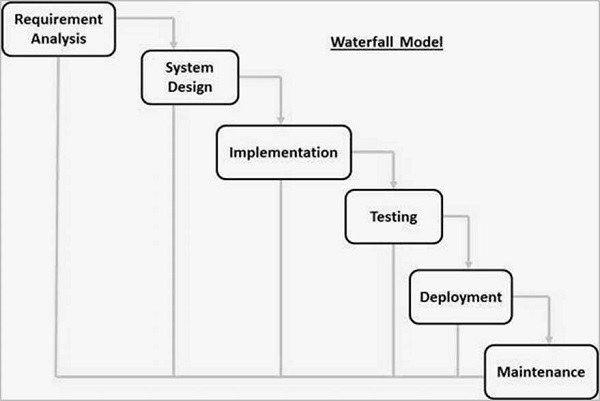Describe the waterfall model and evolutionary process model.
Anonymous Posted new comment May 18, 2024
The Waterfall model is one of the earliest and most traditional software development life cycle (SDLC) models. It is a linear and sequential approach to software development, where each phase must be completed before the next phase begins.
Key Characteristics:
- Linear and Sequential: Each phase depends on the deliverables of the previous one and corresponds to a specialization of tasks.
- Documentation-Driven: Detailed documentation is produced at each phase and often serves as the primary means of communication between phases.
- Rigid Structure: Changes are difficult to implement once a phase is completed and approved, making it less flexible compared to iterative models.
Stages of the Waterfall Model:

- Requirement Analysis:
- Collecting comprehensive requirements from stakeholders.
- Documenting requirements in a requirement specification document.
- System Design:
- Converting requirements into system design.
- Creating system architecture and design documents.
- Implementation (or Coding):
- Dividing the system design into small units or modules and coding them.
- Integrating all the modules together after unit testing.
- Integration and Testing:
- Testing the integrated system to ensure it meets the specified requirements.
- Performing different types of testing like system testing, integration testing, and acceptance testing.
- Deployment:
- Deploying the completed product to the production environment.
- Ensuring it is functional in the real-world setting.
- Maintenance:
- Performing ongoing maintenance tasks such as bug fixing, updates, and enhancements.
- Managing changes and new requirements post-deployment.
Advantages of the Waterfall Model:
- Simplicity and Ease of Use: The straightforward, sequential approach is easy to understand and manage.
- Clear Milestones: Each phase has clear objectives and deliverables, making progress easy to track.
- Well-Documented: Comprehensive documentation helps in better understanding and communication of requirements and designs.
- Structured Approach: The model is disciplined and the process is well-defined, which is beneficial for projects with fixed requirements.
Disadvantages of the Waterfall Model:
- Lack of Flexibility: Difficult to accommodate changes once the project is in the later stages.
- Late Testing: Testing phase comes late in the development cycle, increasing the risk of encountering significant issues late in the process.
- Customer Involvement: Limited customer involvement during the development process, which may lead to a product that does not fully meet customer needs.
- Assumes Requirements are Fixed: It assumes that all requirements can be gathered upfront, which is often not the case in real-world projects.
When to Use the Waterfall Model:
- Projects with well-understood and stable requirements.
- Projects where requirements are not expected to change.
- Shorter projects where the simplicity of the Waterfall model can be an advantage.
- Projects that require thorough documentation and where the team is familiar with the domain.
Ajink Gupta Answered question May 18, 2024

[…] Q3 a) Describe the waterfall model and evolutionary process model. […]